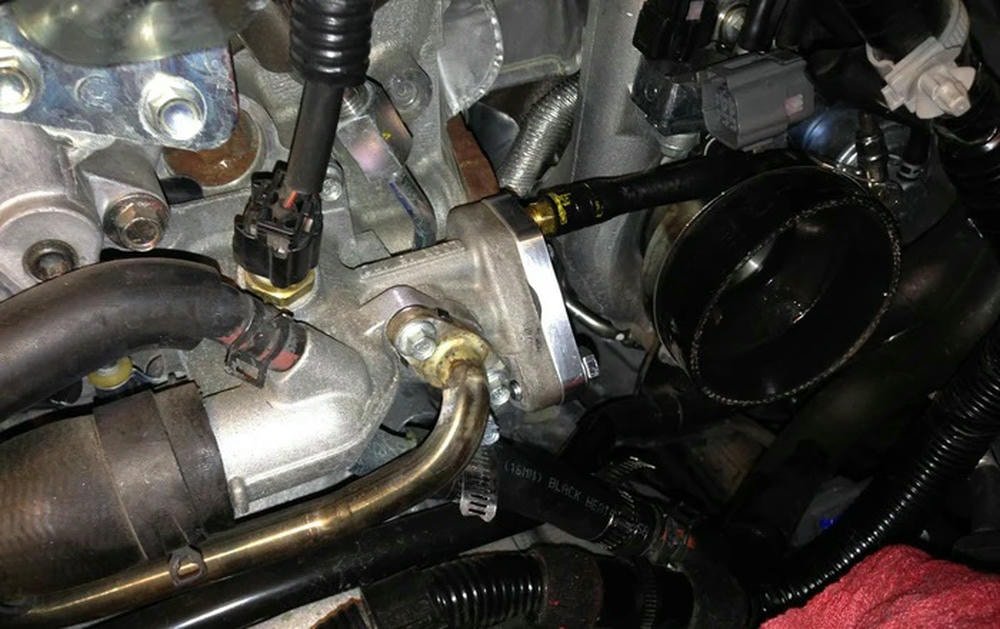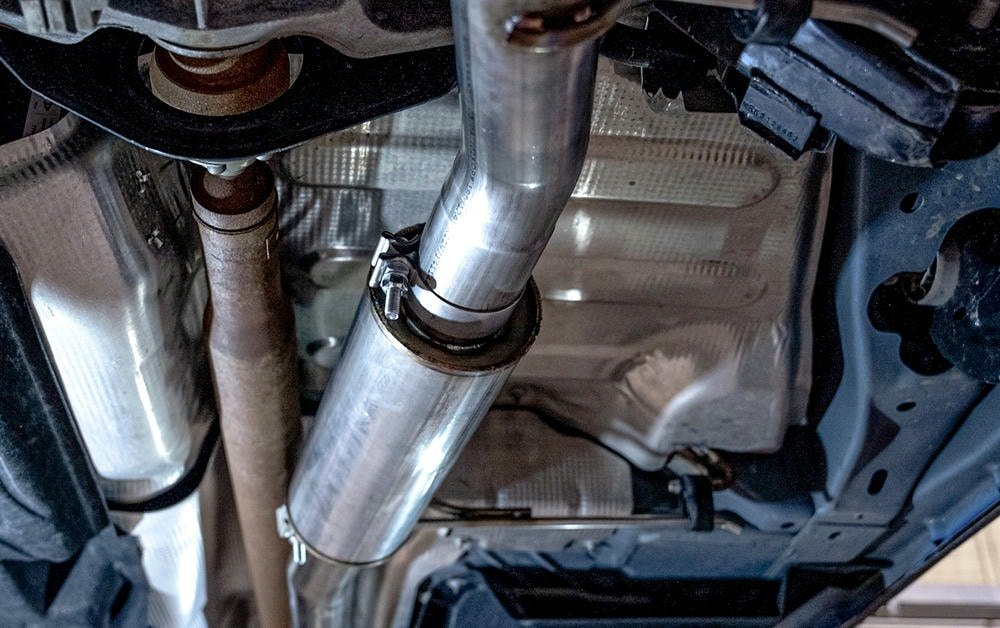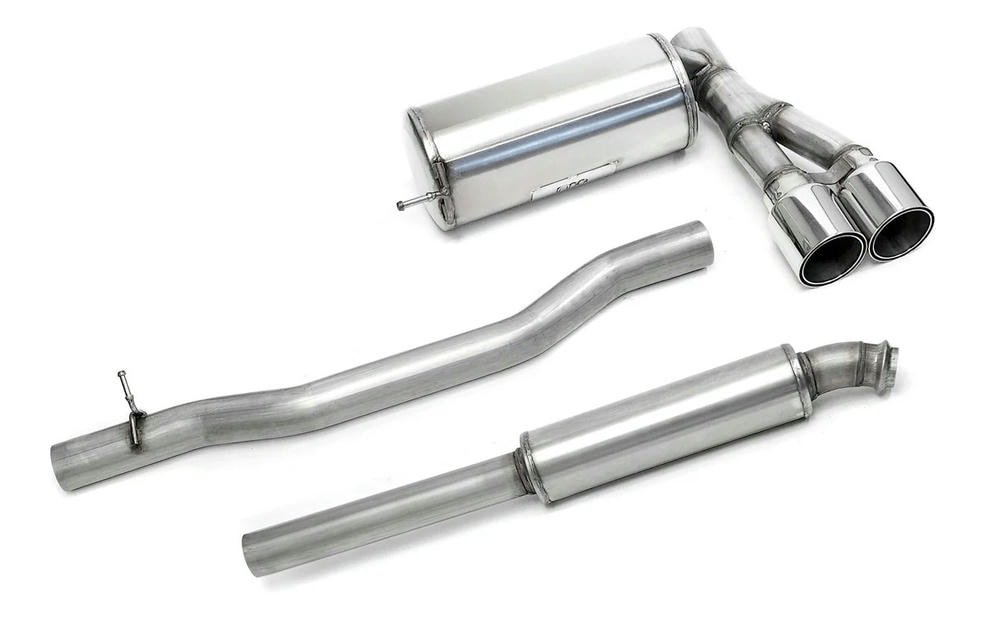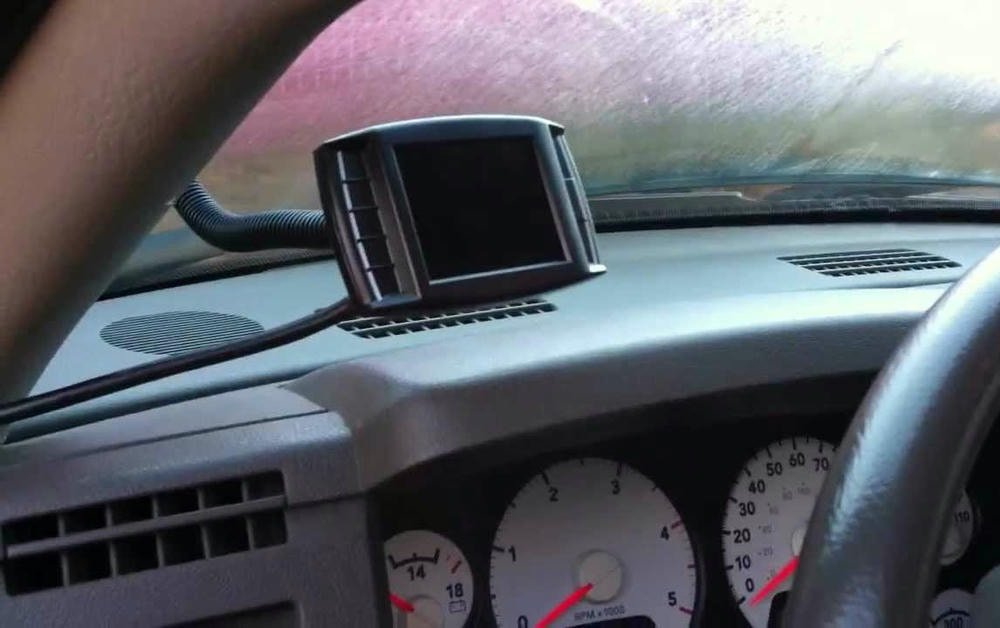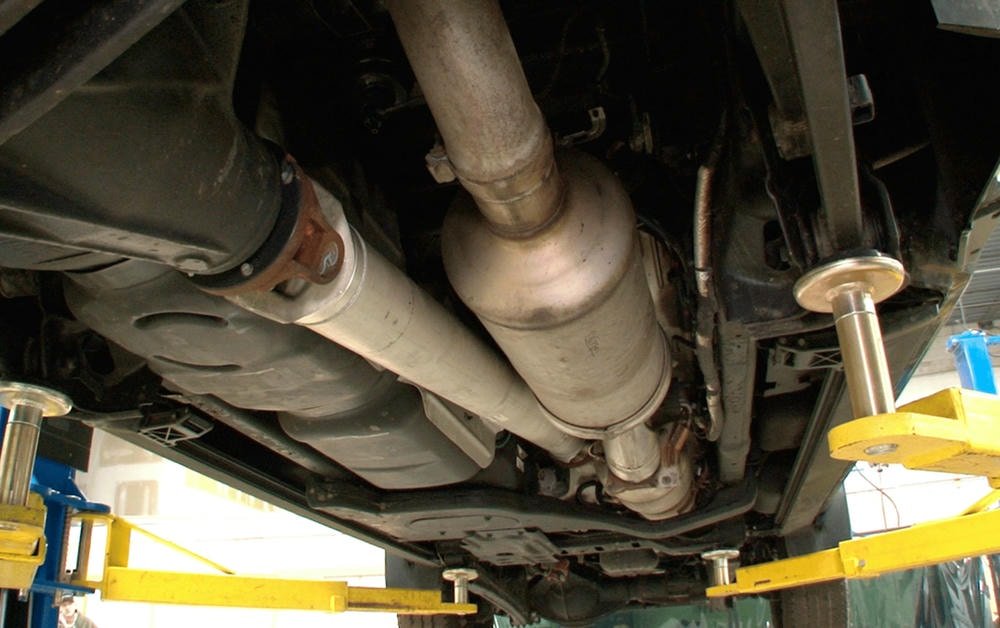To install an EGR delete kit, one must first know what it is. An EGR (Exhaust Gas Recirculation) system lowers pollution from a diesel truck’s engine. Some owners choose to remove this system using a delete kit for various reasons, such as improving performance.
Before starting this task, gathering the right tools like wrenches and screwdrivers is crucial. Also, wearing occhiali e guanti di sicurezza keeps you safe. Knowing how to safely disconnect the battery and let the engine cool down helps too.
The process involves swapping out parts of the EGR with block-off plates, making sure everything fits without leaks. It’s important to test things after installation like checking if there are any leaks or if the engine runs differently.
Sometimes, removing the EGR can make error codes pop up on your dashboard that need fixing.
This guide walks through each step of installing an EGR delete kit in a diesel truck with tips along the way. Ready to learn more? Keep reading!
Indice dei contenuti
TogglePreparazione per l'installazione
Getting ready to fit an EGR delete kit takes the right gear and a focus on safety. One needs to gather wrenches, screwdrivers, and a socket set, while making sure the vehicle is stable and secure on stands.
Strumenti e materiali necessari
Getting ready for a DIY EGR delete kit installation on your diesel engine is like preparing for a big adventure. You’ll need the right tools and materials to make sure everything goes smoothly. Based on my own experience dealing with an F350 Powerstroke Diesel, here’s what you’ll need:
- Socket set: A good set with various sizes will help you remove bolts easily.
- Wrenches: Adjustable wrenches are useful for tight spots.
- Cacciaviti: You’ll need both flathead and Phillips for different screws.
- Pliers: Sometimes, hoses and clips require a strong grip to remove.
- Gasket scraper: Old materiale della guarnizione needs clearing off surfaces before installing new ones.
- EGR block-off plates: These are the main parts of the kit that block the exhaust gas recirculation path.
- New gaskets: To ensure a leak-free seal between block-off plates and engine surfaces.
- High-temperature sealant: This helps prevent leaks at connections under extreme conditions.
- Flashlight or work light: Lighting is crucial to see what you’re doing under the hood or in dim areas.
- Clean rags: Keep things clean and free from oil or coolant spills.
- Safety glasses: Protect your eyes from dirt, debris, or accidental spills.
This list has been battle-tested during my own EGR removal project on my truck, proving invaluable for ensuring I had everything needed before starting, thus avoiding any frustrating pauses to run out for forgotten items.
Safety Precautions and Vehicle Setup
Installing an EGR delete kit improves diesel engine performance and engine optimization. Diesel truck owners should prioritize safety before starting this DIY engine mod. Here’s a guide on safety precautions and how to set up your vehicle:
- Wear protective gear: Gloves and safety glasses protect against sharp objects and fluids.
- Disconnect the battery: This prevents electrical shorts while working on the engine.
- Check for a cool engine: Never start work if the truck has been running recently; high temperatures can cause burns.
- Raise the truck: Use a jack and stands to get under the vehicle safely, if necessary.
- Secure loose clothing and hair: Avoid anything that could get caught in moving parts.
- Keep a fire extinguisher nearby: Be ready for any accidental sparks or fires.
- Organize tools beforehand: Having all necessary tools like wrenches, sockets, and screwdrivers will make the process smoother.
- Clear workspace of hazards: Make sure there are no spills or tripping hazards around your work area.
- Use proper ventilation: Exhaust gases can be harmful; work in a well-ventilated space.
Setting up your vehicle correctly ensures a safe environment for installing an EGR delete kit, enhancing diesel tuning setup, and ensuring optimal diesel engine performance with your custom tuning setup.
Pre-installation Checklist
Careful planning and detailed preparation are key when you’re getting ready to outfit a diesel truck with an EGR delete kit. Here’s a checklist to ensure vehicle owners have all their bases covered before initiating the process.
- Collect all necessary tools: It’s vital to have a socket set, wrenches, screwdrivers, and pliers at hand. Remember to include a torque wrench to fasten bolts to the correct specifications.
- Assemble safety gear: Always don gloves and safety glasses to protect hands and eyes during the operation.
- Prepare the vehicle: Position the truck on a level terrain and unplug the battery to avert any electrical complications.
- Verify the EGR delete kit components: Ascertain that all the components like block-off plates, gaskets, bolts, and other hardware are in the kit.
- Read the guidelines thoroughly: Familiarizing with every step beforehand can minimize errors and streamline the procedure.
- Examine the EGR system: Inspect the exhaust gas recirculation tube, valve, and related components for any indications of wear or damage prior to extraction.
- Get the substitute parts ready: If incorporating a new intake manifold or throttle body as part of the process, ensure these parts are set and they align adequately with the delete kit.
- Controllo engine coolant level: Depending on the vehicle model, it might be needed to reduce or drain coolant to evade spillage during the EGR cooler removal.
- Run a check for error codes: Employ a scanner tool to detect any existing engine codes that could affect performance post-installation.
- Validate software updates or tuner requisites: Certain trucks may demand an aftermarket tuner or software update to function efficiently without the EGR system.
From acquired knowledge, following every step in this checklist can prove beneficial in the long run. Ensuring all preparations are made before commencing work facilitates a streamlined operation from inception to completion.
Processo di installazione passo dopo passo
The step-by-step installation process for an EGR delete kit is a straight path to boosting your diesel truck’s performance. First, you’ll need to take out the existing exhaust gas recirculation system, which might involve removing parts like the EGR valve and disconnecting pipes or vacuum hoses.
Next up, it’s time to fit in the block-off plates where the old system was, ensuring everything sits tight with the right gaskets and bolts. You’ll wrap things up by making sure all new parts are secure and giving your engine a test run to catch any issues early on.
For truck owners ready to tweak their rides for better power and efficiency, this process shows just how accessible DIY engine mods can be with some basic tools and a bit of elbow grease.
Disconnecting the EGR System
First, it’s necessary to switch off the diesel truck’s engine and allow it to cool down. This key step is required to avert potential burns from heated components. A person will require a set of wrenches to ease the bolts on the exhaust gas recirculation (EGR) system.
They proceed with caution to separate vacuum hoses and pipes secured to the EGR valve. This task can present challenges as these parts may have become tough or fragile due to heat.
A truck owner carried out this task in the previous summer on their Ford Power Stroke diesel. They discovered that capturing images with a phone before disassembling anything assisted them in recalling the placement of each hose and bolt for future reference.
It also conserved time during the reassembly phase following the EGR delete kit installation. Some bolts presented a challenge due to their location, but a long extension for the socket wrench simplified the task.
Installing the Block-off Plates
Installing the block-off plates is a crucial step in the EGR delete kit fitting process for diesel trucks. To start, locate where the old EGR system was connected to your engine and exhaust.
Here, you will place the new plates. Make sure each plate matches its spot perfectly for a tight seal. Using a wrench, carefully bolt down the plates onto both the engine and exhaust flange.
A snug fit ensures no emissions leak past these aftermarket upgrades.
For an effective installation, applying a high-temperature gasket or sealant around each plate edges can prevent future leaks. This small action could save lots of time troubleshooting down the road.
After securing all hardware tightly, double-check every bolt. This step helps ensure that everything stays in place even under harsh driving conditions typical for powerstrokes and other diesel engines aiming for performance without tailpipe emissions.
Securing Hardware and Gaskets
To secure the hardware and gaskets during an EGR delete kit installation, diesel truck owners need the right tools. Tightening bolts and nuts is crucial for a snug fit without leaks.
Utilizzare un Chiave dinamometrica for precise tightening. This step prevents future problems with the engine or exhaust.
For gaskets, make sure they align perfectly with block-off plates. Misalignment can cause leaks, harming prestazioni del motore. It’s a careful process to protect your engine and ensure everything works well after you install the EGR delete kit on your l powerstroke or any aftermarket sistema di scarico.
Final Adjustments and Testing
After installing the EGR delete kit, making final adjustments e thorough testing are crucial. This step ensures everything works right and the vehicle is safe to drive.
- Start the diesel truck’s engine. Listen for any unusual noises that weren’t there before the EGR delete kit installation.
- Let the engine run for a few minutes. This helps to check if all parts are working well together.
- Check all connections you made during the installation process. Make sure each connection is tight and secure.
- Utilizzare un scan tool to read the truck’s computer system. Look for any codici di errore that might have been triggered by the EGR delete installation.
- Clear any error codes found using your scan tool. Some vehicles may need a specific procedure to clear these codes, so refer to your truck’s manual.
- Take your truck for a short test drive. Pay attention to how it runs and listen for anything odd.
- After the test drive, inspect under the hood again while the engine is still warm. You’re checking for leaks or anything out of place.
- Review engine performance data with an OBD-II scanner if available. Compare this data to benchmarks or previous readings before the EGR delete kit was installed.
- If you find issues like leaks or poor performance, go back and review your workmanship on installing block-off plates and securing hardware and gaskets.
10.Check hose connections and gaskets after a couple of days of driving as they can settle or shift during normal use.
Making sure everything is properly adjusted and testing thoroughly after an EGR delete installation guide can save one from future headaches. It ensures that their diesel truck runs smoothly without unwanted surprises down the road.
Considerazioni successive all'installazione
After you install the EGR delete kit, it’s time to check your work. Look for any leaks and make sure everything fits right. Then, test how your diesel truck drives and keep an eye on the engine lights for codes that might pop up.
Checking for Leaks and Proper Fitment
Checking for leaks and ensuring everything fits right is a must after installing an EGR delete kit. Use a soapy water mix to spot any small leaks from the new connections. Watch bubbles form on areas where gas might escape.
This trick helps find problems you can’t see.
A leak-free system runs better and lasts longer.
Next, double-check all parts secure tightly in place. A loose bolt or misaligned plate can cause trouble down the road. Using torque wrenches ensures each nut and bolt has just the right tightness.
This step keeps your diesel truck running smoothly after removing the EGR system.
Testing Engine Performance
After installing the EGR delete kit, it’s vital to check how the engine runs. Owners start by taking their diesel truck for a drive. They focus on how smooth or rough the engine feels.
It’s key to listen for any odd sounds that weren’t there before. If something doesn’t sound right, it might mean a leak or another issue.
A friend once shared his story of testing his truck after an EGR delete kit installation. He used an OBD II scanner tool to read the engine’s data while driving. This tool showed him information like speed and engine temperature, helping him spot problems early.
His advice? Always have one handy during test drives.
Addressing Any Error Codes
After installing an EGR delete kit, diesel truck owners might see codici di errore on their dashboard. This happens because the truck’s computer notices the EGR system is missing. To fix this, using a code reader is a smart move.
A code reader can find out what each error code means. For many trucks, fixing these codes means updating the vehicle’s software or using a device that tricks the computer into thinking the EGR system is still there.
A friend once had trouble with his diesel truck after putting in an EGR delete kit. He got several error codes that made him worry. But with a quick use of his code reader and some online research, he found out how to update his truck’s software himself.
It was simpler than he thought it would be and took only a couple of hours to get everything running smoothly again. So, having the right tools and knowing where to look for help can make addressing any error codes less stressful.
Conclusione
Experts like John Miller, with years in diesel engine work, have a lot to say about installing an EGR delete kit. John has worked on trucks his whole life. His background includes degrees in automotive technology and lots of real-world experience.
He’s known for making engines run better and cleaner.
John looks at how the EGR delete kit works. The kit blocks exhaust from re-entering the engine. This can make the engine run cooler and more efficiently. John points out that this simple change can really improve performance.
Safety is big for John. He reminds everyone that while an EGR delete can boost power, it must be done right. This means using quality parts and following laws about emissions controls.
For everyday use, he suggests drivers notice their truck’s response after the install. They might find their vehicle runs stronger on less fuel.
But there are two sides to every story. The benefits include better performance and possibly longer engine life. The downsides? It might not be legal everywhere, and it could affect warranty coverage.
John gives a thumbs-up on installing an EGR delete kit for those looking to improve their diesel truck’s performance but urges doing so thoughtfully, keeping legal issues in mind.
Domande frequenti
What is an EGR delete kit and why would I need one?
An EGR delete kit is a tool used to bypass the Exhaust Gas Recirculation (EGR) system in your vehicle. This can improve engine performance, reduce emissions, and prolong the life of your engine.
What tools do I need for installing an EGR delete kit?
You’ll typically require basic hand tools such as wrenches, screwdrivers, pliers, and possibly some specialty automotive tools depending on your vehicle’s make and model.
Are there any tips for successfully installing an EGR delete kit?
Yes! Make sure you’re familiar with your vehicle’s layout before starting the process. Always follow instructions carefully from start to finish ensuring each step is completed correctly before moving onto the next one.
Can I install an EGR delete kit myself or should I hire a professional?
While it’s possible to install an EGR Delete Kit yourself if you have mechanical experience and necessary installation tools; hiring a professional might be beneficial if you’re not comfortable with auto repair tasks.

